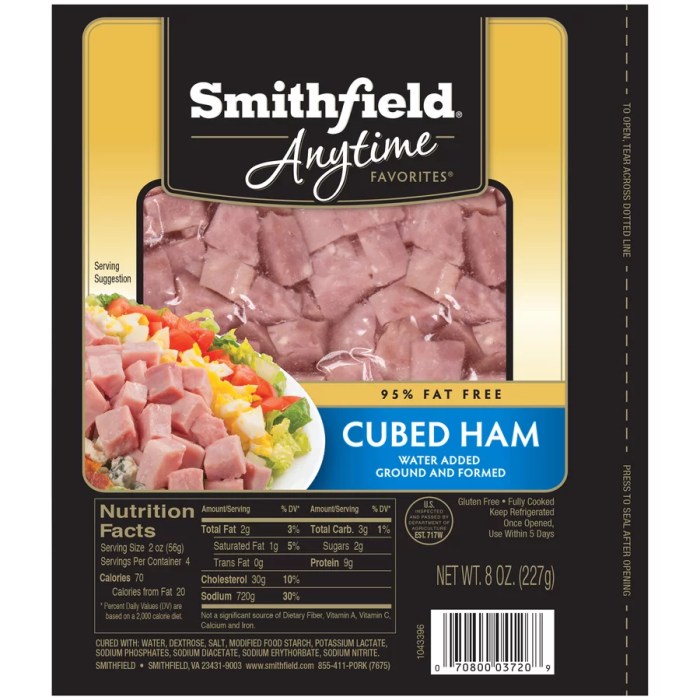A food handler discovers a container of cubed ham – In the realm of food safety, a food handler’s discovery of a container of cubed ham raises significant concerns. This incident necessitates prompt and appropriate actions to mitigate potential risks and ensure consumer well-being.
Upon encountering such a discovery, the food handler must meticulously document the container’s characteristics, including its size, shape, material, and location. Careful examination of the ham’s appearance, texture, quantity, and freshness is paramount to assess its condition.
Identification of the Ham Container

Upon entering the food preparation area, a food handler discovered a container of cubed ham. The container was made of clear plastic and had a capacity of approximately 5 pounds. It was cylindrical in shape and had a lid that was not sealed shut.
The container was located on a shelf in the walk-in refrigerator, next to other containers of prepared food items.
Examination of the Ham

The ham was a pale pink color and had a slightly firm texture. The pieces of ham were approximately 1 inch in size and there was approximately 3 pounds of ham in the container. The ham did not have an expiration date, but it did have a “use by” date of two days prior.
There were no signs of spoilage, such as mold or discoloration.
Handling and Storage Procedures, A food handler discovers a container of cubed ham
The food handler immediately notified the manager of the discovery. The manager instructed the food handler to wash the ham thoroughly with cold water and to cook it to an internal temperature of 165 degrees Fahrenheit. The manager also instructed the food handler to store the ham in the refrigerator at a temperature of 41 degrees Fahrenheit or below.
Communication and Reporting
The manager notified the health inspector of the discovery. The health inspector inspected the ham and the food preparation area and found no evidence of contamination. The health inspector instructed the manager to document the incident and to take steps to prevent similar incidents from occurring in the future.
Potential Impacts and Risks
Consuming contaminated ham can lead to a variety of health problems, including food poisoning. Food poisoning can cause symptoms such as nausea, vomiting, diarrhea, and abdominal cramps. In severe cases, food poisoning can lead to hospitalization and even death.
Preventive Measures
There are a number of steps that can be taken to prevent similar incidents from occurring in the future. These steps include:
- Regularly training food handlers on food safety procedures
- Monitoring food temperatures to ensure that food is cooked to a safe internal temperature
- Properly storing food at the correct temperature
- Labeling food with the date it was prepared and the “use by” date
Key Questions Answered: A Food Handler Discovers A Container Of Cubed Ham
What are the potential health risks associated with consuming contaminated ham?
Consuming contaminated ham can lead to foodborne illnesses caused by bacteria such as Salmonella, Listeria, or E. coli. These illnesses can cause symptoms ranging from mild gastrointestinal distress to severe infections.
What are the financial and reputational risks to the food establishment?
Mishandling food can result in financial losses due to product recalls, fines, or legal action. It can also damage the establishment’s reputation and erode customer trust.
What are some preventive measures to prevent similar incidents in the future?
Regular food safety training for staff, proper temperature monitoring, and adherence to food storage guidelines are crucial to prevent similar incidents.

